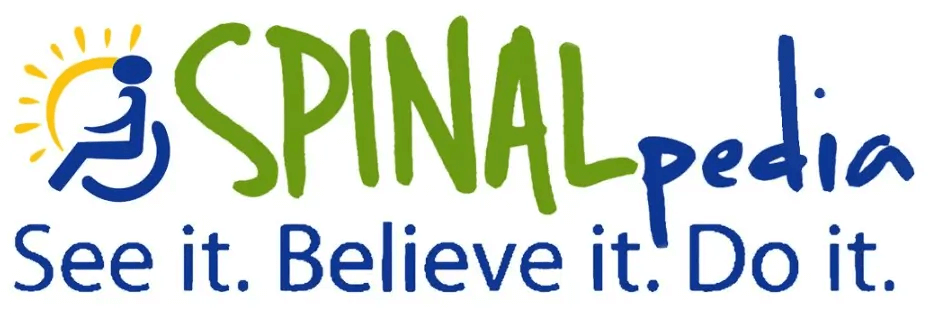
To explain how the spinal cord works, doctors long ago created a chart that outlines how each segment of the spinal cord controls the body. At the top of the spinal cord is where the most critical movement occurs, such as diaphragm movement to assist with breathing; at the bottom of the spinal cord is where bowel, bladder and sexual function occurs. The spinal cord, however, cannot regenerate itself when it’s injured, causing paralysis in millions of people across the globe.
Where an injury on the spinal cord occurs is where the paralysis will begin, extending from that point on the body downward. The following page outlines what occurs when a complete injury is sustained, which means that no nerves are intact to allow signals to pass through the injured area. (Please review our page on Complete vs. Incomplete injuries to learn more.) Many people sustain incomplete injuries, which cause people to experience the return of some movement and sensation. Here is an overview of how each segment of the spinal cord controls the body.
Cervical
Most spinal cord injuries occur in the Cervical (C) area; the 5th and 6th vertebrae in the neck are considered the most vulnerable to injury. There are eight vertebrae in the Cervical area of the spinal cord. Injuries here are considered the most severe, since breathing can be affected. When you sustain a complete Cervical injury, these are the symptoms you will typically experience:
- C1-C2: No head, arm or leg movement.
- C3: Can control diaphragm to help with breathing. Very little to no movement in head. No arm or leg movement.
- C4: Can shrug shoulders. No arm or leg movement.
- C5: Can move shoulders and bicep muscles. No hand or leg movement.
- C6: Can move wrist muscles, allowing wrist to bend upward. No leg movement.
- C7: Can move tricep muscles and extend arm at the elbow. Allows for some finger movement. No leg movement.
- C8: Allows for additional finger movement and some upper back muscle movement. No leg movement.
Thoracic
The second level of the spinal column is called the Thoracic (T) area. There are 12 vertebrae in the thoracic section and each vertebrae protects a segment of the spinal cord that controls the hands, torso muscles, and other muscles. See which each segment of the Thoracic area controls which part of the body below:
– T1-T5: These vertebrae protect the section of the spinal cord that controls most hand muscles, some arm, and trunk muscles. Minimal trunk control is present in those with injuries at this level.
– T6-T12: These vertebrae are lower in the spinal column, which means people with injuries in this area will have increased chest and abdominal control, giving them better balance. However, no leg movement is found in people with complete injuries at this level.
Lumbar
A smaller area of spinal column is the Lumbar (L) area. This area controls many important back muscles and leg and foot muscles. Below is the physical ability one may have after experiencing a complete Lumbar SCI:
– L1: All back muscle control, small quadriceps control.
– L2: Same as L1, but more thigh control.
– L3: Can bend hips, straighten knees.
– L4: Can pull ankles up.
– L5: Can extend toes.
Sacral
The very last part of the spinal column is called the Sacral (S) area, and this area controls important bodily functions such as bowel and bladder control. See more about the symptoms and movement of those with Sacral spinal cord injuries below:
– S1-S5: An injury in any of the five segments of the Sacral area will result in paralysis of the knee area, ankle, as well as a loss of bowel and bladder control. Sexual function is also controlled by this segment of the spinal cord. Those with injuries in this area typically have the ability to straighten their hips and bend their knees.
Understanding how the spinal cord affects the body can be difficult, as spinal cords are incredibly complex. Here is a Dermatone chart that details what each segment of the spinal cord controls on the body.










